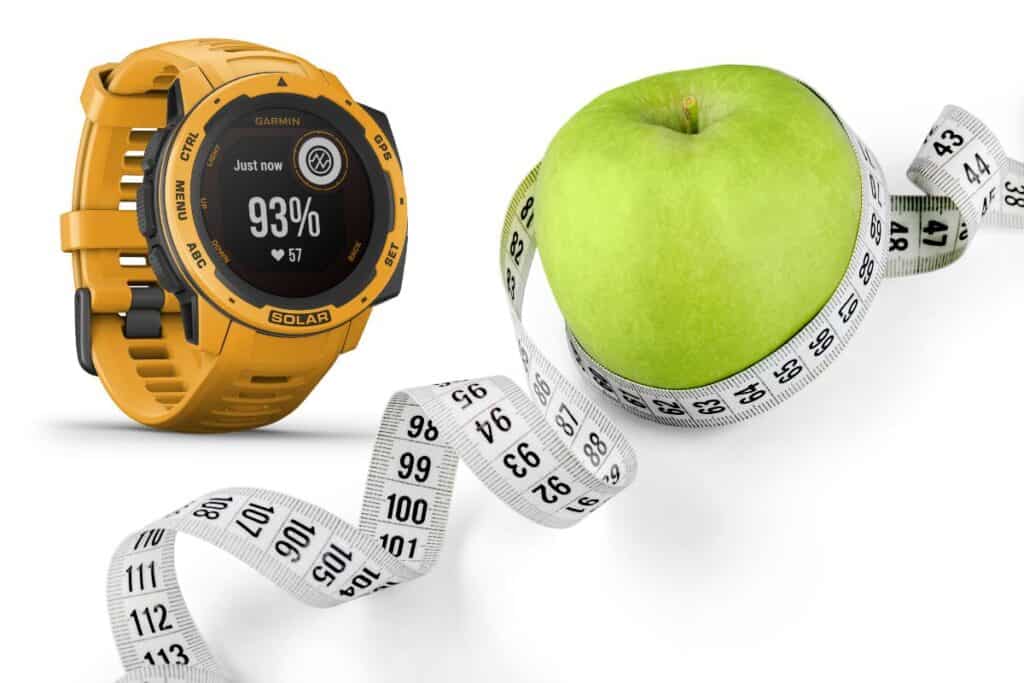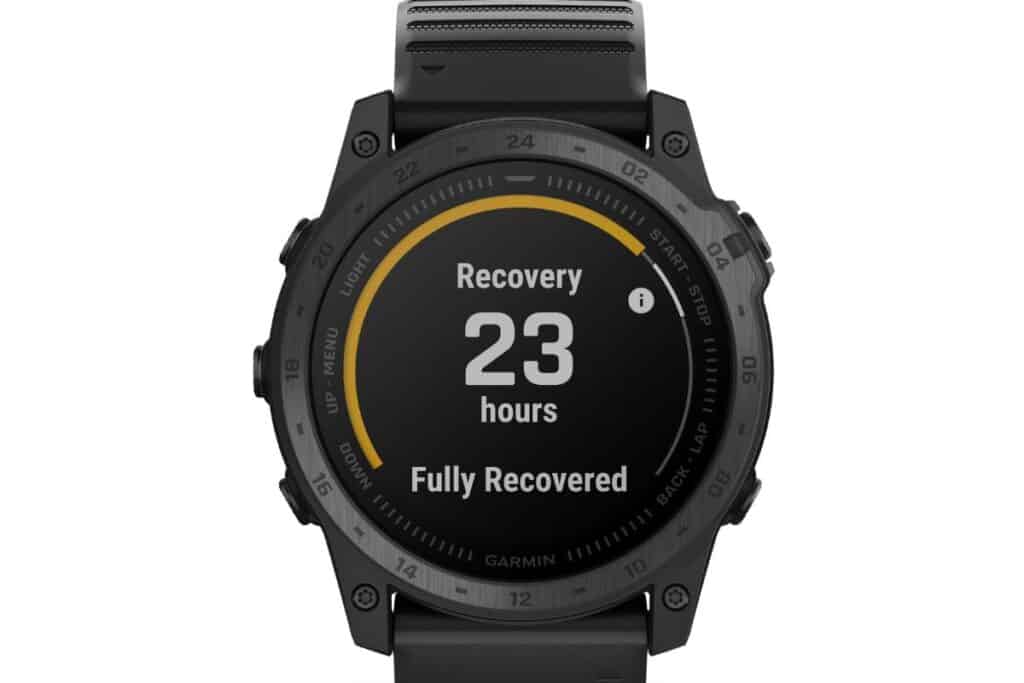Can Garmin Watch Measure Body Fat? (ANSWERED)
Considering investing in a Garmin watch and wondering, Can Garmin Watch measure body fat? If so, you have definitely come to the right place.

While you are doing research, visit the Garmin Watches category page for more, and here are two articles you should bookmark for future reference: What Are The Symbols On A Garmin Watch? The Ultimate Guide! and How To Change Heart Rate Zones On The Garmin Connect
Garmin watches are able to measure body-fat and provide an estimate of a person’s composition. Garmin watches come with their own proprietary body composition monitoring technology, known as Bioelectrical Impedance Analysis (BIA).
Not only did I go through a number of user comments about this, but I got in touch with a Garmin representative as well to make sure that all the information on this piece is accurate.
Can Garmin Watch Measure Body-fat?
Yes, Garmin watches are able to measure body-fat and provide an estimate of your composition. This information can be useful for tracking progress and ensuring that goals are achieved over time.
Garmin watches come with their own proprietary body composition monitoring technology, known as Bioelectrical Impedance Analysis (BIA). BIA works by sending small electrical pulses through the body to calculate the resistance between two points.
The more resistance there is, the higher the level of fat in that area of the body. Taking these readings multiple times during a workout session or at regular intervals provides an accurate overview of a user’s overall body composition as it changes over time.
The accuracy of this method depends on many factors. These include the user’s hydration level and whether or not they have eaten recently. Fortunately, Garmin watches come with built-in algorithms which take these variables into account when calculating body-fat percentages.
In addition to this, Garmin watches also use other methods for measuring body composition. This includes Near Infrared Spectroscopy (NIRS) and Dual Emission X-ray Absorptiometry (DXA).
NIRS works by shining a light through your skin to measure subcutaneous fat levels. DXA, on the other hand, uses x-ray technology to analyze bone density and muscle mass.
Both of these methods are more accurate than BIA but require special equipment. Furthermore, they are often reserved for clinical settings.
How Does Garmin Scale Determine Body-fat?
Garmin’s body-fat scale uses Bioelectric Impedance Analysis (BIA) to measure your body-fat percentage, as mentioned above. This method works by sending an imperceptible electrical signal through your body, which travels faster through fluids, such as water, than through solid matter, such as muscle and fat.
The speed at which the signal passes is used to calculate total body water and then subsequently determine the amount of body-fat you have (this is in relation to your total weight).
This data is then converted into your overall percentage of body-fat. As with any type of measurement, accuracy can vary depending on a variety of factors, including but not limited to Hydration levels, Skin temperature, and General physical condition.
However, it is important to note that BIA is one of the most accurate methods of body-fat measurement available to you.

Unlike other body-fat scales, the Garmin scale is able to measure your body-fat percentage without requiring you to be barefoot or wearing wet clothing. This makes it convenient and easy to use, as well as provides accurate results.
Additionally, it can also provide measurements for the following:
- Muscle mass,
- Bone mass, and
- Water levels in your body.
All of this combines to give you a complete picture of your overall health.
How Accurate Is Garmin Scale Body Fat?
It is important to note that Garmin watches are known mostly for providing accurate and reliable fitness tracking information. Many of their wrist-worn devices, for instance, offer the ability to measure body-fat composition. This feature can be especially helpful when it comes to monitoring health and achieving fitness goals.
But how accurate is Garmin’s body-fat measurement technology, really?
In general, Garmin watch body-fat measurements can provide an estimate of overall body composition. But like any device, accuracy will vary based on a variety of factors. These include:
The type of sensor used affects both the frequency and quality of data collected from the device. For example, optical sensors are less accurate than traditional BIA sensors, as they measure body-fat by sending light from LEDs into the skin and measuring how much is absorbed.
This method can often be affected by environmental factors such as humidity or temperature, which can lead to inaccurate readings.
Other factors: These include:
- Calibration
- Positioning of the watch on your wrist
- Size and shape of your wrist, and
- Body movement during testing.
All of these variables may make it difficult to obtain consistent results from any Garmin watch.
You must note that Garmin body-fat measurements should not be taken as an absolute representation of one’s overall body composition. Instead, they should be used as a general guideline ONLY to help track progress over time.
To maximize accuracy, Garmin recommends that you:
- Calibrate your device before each use,
- Take multiple body-fat measurements
- Opt for the most consistent results.
- Make sure the watch is positioned snugly on the wrist so that there are no gaps between it and the skin surface.
As with any fitness tracker, Garmin’s body-fat measurement technology should not be used in place of professional medical advice. This, in essence, means that if you’re concerned about your health or have questions about specific readings, consult a healthcare provider. You should NOT rely on the readings alone.
Can Garmin Watch Measure Body Composition?
Yes, certain models of Garmin watches can measure body composition. This is done by using an advanced technology known as bioelectrical impedance analysis (BIA).
BIA works by sending a small electrical signal through the body and measuring how it is impacted by different levels of tissue resistance. The data gathered from this process can then be used to calculate the user’s body fat percentage, skeletal muscle mass, and other useful statistics.
While this feature may not be available on every Garmin watch model, it is an impressive innovation that can help users more accurately track both their health and fitness goals.
How Do I Log My Body Fat On Garmin Connect?
First, open the Garmin Connect mobile app and go to the “Measurements” section. There, you will see an option for entering your body composition data; simply tap on it. Next, enter your body fat measurement in either percent or kilograms as instructed by your device manual.
You may also have to enter any additional information such as gender and age depending on what type of device you are using. Finally, save the data in order for it to appear in your health metrics feed so that you can track changes over time.
Can A Smartwatch Measure Body Fat?
Yes, it is possible for a smartwatch to measure body fat. Smartwatches use sensors such as accelerometers and bioimpedance technology to estimate a person’s body fat percentage. This data can then be used to track fitness goals or monitor health patterns over time.
However, the accuracy of these measurements may vary depending on several factors such as the type of watch and its calibration. Additionally, the accuracy of readings from smartwatches may not be as precise compared to other methods of measuring body fat such as hydrostatic weighing or dual-energy x-ray absorptiometry (DEXA).
As a result, it is important to consider the limitations when using this technology to assess your body composition.
Key Takeaways
- Garmin watches are able to measure body-fat.
- Some models of Garmin watches can measure body composition.
- Garmin watches come with their own BIA technology.
- Garmin watches also use NIRS DXA for body fat measurement.
